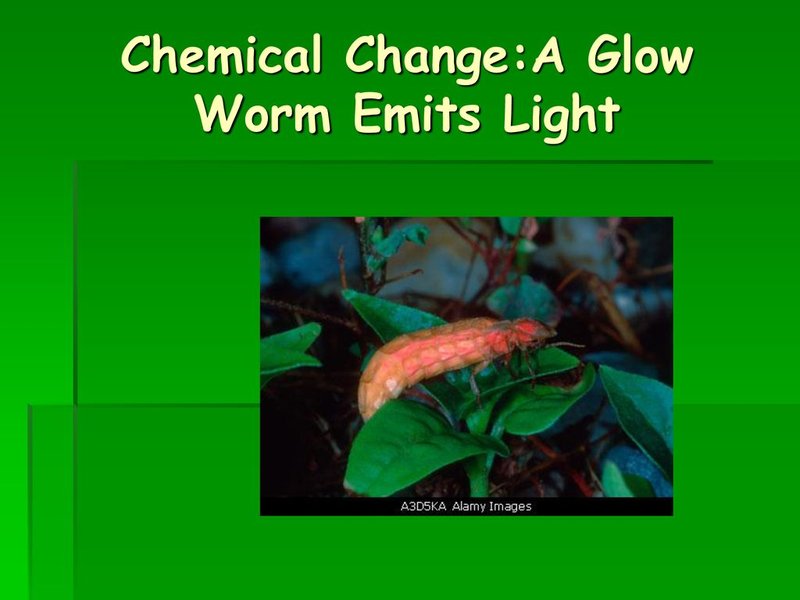
Bioluminescence is not just about looking pretty; it’s a survival mechanism. Glow worms use their soft, eerie glow to attract prey and mates, much like moths are drawn to light at night. Let’s dive into the chemistry behind this bioluminescent wonder, breaking it down into bite-sized pieces, just like sharing a latte and a pastry with a friend.
What Is Bioluminescence?
Bioluminescence refers to the ability of living organisms to produce light. It’s not a common trait among all animals, but when it occurs, it’s usually pretty spectacular. The glow you see from glow worms is a prime example of this, with a soft light that can mesmerize anyone lucky enough to witness it.
Here’s the thing: bioluminescence happens through a specific chemical reaction. When certain chemicals called luciferins react with oxygen, they emit light. This reaction is catalyzed by an enzyme called luciferase. Picture this as a science experiment where you have the right ingredients to create your own glow – it’s a perfect formula for stunning light shows!
In the case of glow worms, this process is vital for survival. By lighting up their surroundings, they attract unsuspecting insects, which then become their food. Isn’t it fascinating how nature has its own way of creating a dinner bell, all through chemistry?
The Chemistry Behind Glow Worm Light Production
So, what’s going on at the molecular level when glow worms light up? The glow is produced when **luciferin**, a light-emitting compound, reacts with **oxygen**. This reaction is known as *oxidation*. The luciferase enzyme plays a critical role by speeding up this process, ensuring that the glow happens efficiently.
When luciferin absorbs oxygen, it goes through a transformation that releases energy in the form of light. This is similar to how fireflies produce light, but glow worms have their own unique twist on the process. The light produced is usually a beautiful, pale blue or green, which is visible even in complete darkness.
You might be wondering why blue light, specifically? Blue light has a longer wavelength, making it more visible in the dark and more effective in attracting prey. It’s almost like these little creatures have tuned their lights to the perfect frequency for their environment—now that’s clever!
What Role Does Luciferin Play?
Luciferin is the star of the show when it comes to glow worm light production. Different species have different forms of luciferin, but they all share some common characteristics. Think of luciferin as the fuel in a car; without it, you simply wouldn’t go anywhere.
When this compound undergoes oxidation with the help of luciferase, it forms an excited state, which eventually emits light as it returns to its ground state. It’s quite a spectacle, showcasing how powerful and intricate even the smallest biological processes can be.
But luciferin isn’t just a simple compound. It’s made up of a complex structure that allows it to stir in different ecosystems. This adaptability ensures that glow worms can thrive in their respective habitats, whether they are hanging from a cave ceiling or nestled within a forest.
The Function of Light in Glow Worms’ Lives
Now that we’ve covered the chemistry, let’s talk about why glow worms produce this beautiful light. For glow worms, light serves a dual purpose: **attracting prey** and **mating**.
When the female glow worm emits her glow, she lures male glow worms to her side. It’s like a neon sign flashing, saying, “Hey, come and find me!” This bioluminescence is not just for show; it’s essential to their reproductive success.
When it comes to attracting prey, the strategy is similar. The glow attracts insects, who see the light and think they’ve found a safe space. Instead, they fly right into the glow worm’s trap! Once caught, the glow worm feasts, using its glow to ensure a steady supply of food. Nature truly is a master of ingenious tactics.
Where Do Glow Worms Live?
Glow worms can be found in various habitats around the world, with some of the most famous being in New Zealand and Australia. These areas offer the right balance of humidity and darkness, perfect for glow worms to thrive.
In New Zealand, for example, glow worms light up the dark caves, creating an enchanting experience for visitors. Imagine walking through a cave and seeing thousands of tiny blue lights guiding your way. It’s a sight that captures the magic of nature, making you feel like you’re in a fairy tale.
In contrast, glow worms in North America may not be as prominent or widespread, but they do exist. Generally, they prefer moist environments where they can find enough food and reproduce. Each species has adapted beautifully to its surroundings, showcasing the diversity of life on our planet.
Conservation and the Future of Glow Worms
Sadly, like many species, glow worms face threats from habitat loss and environmental changes. Urbanization and pollution can alter their natural habitats, making it harder for these delicate creatures to thrive.
Conservation efforts are crucial to maintaining their populations. Protecting natural habitats and promoting awareness can help ensure that future generations can marvel at the glow of these little wonders. You might even consider visiting a local cave or nature reserve that supports glow worm conservation. It’s a great way to experience their beauty while supporting their survival.
By shining a light—pun intended—on the importance of these creatures, we can appreciate not only their natural beauty but also the chemistry that makes their glow possible. After all, every little bit counts when it comes to preserving our planet’s biodiversity.
Final Thoughts
Understanding the chemistry of glow worm light production lets us appreciate these creatures even more. Their ability to create light is not just a pretty sight; it’s a brilliant example of how nature uses chemistry for survival.
Next time you see a glow worm, remember that it’s more than just a glowing entity. It’s a marvel of evolution, chemistry, and environmental adaptation. So, keep an eye out for those glimmers in the dark—they’re a charming reminder of nature’s wonders!

